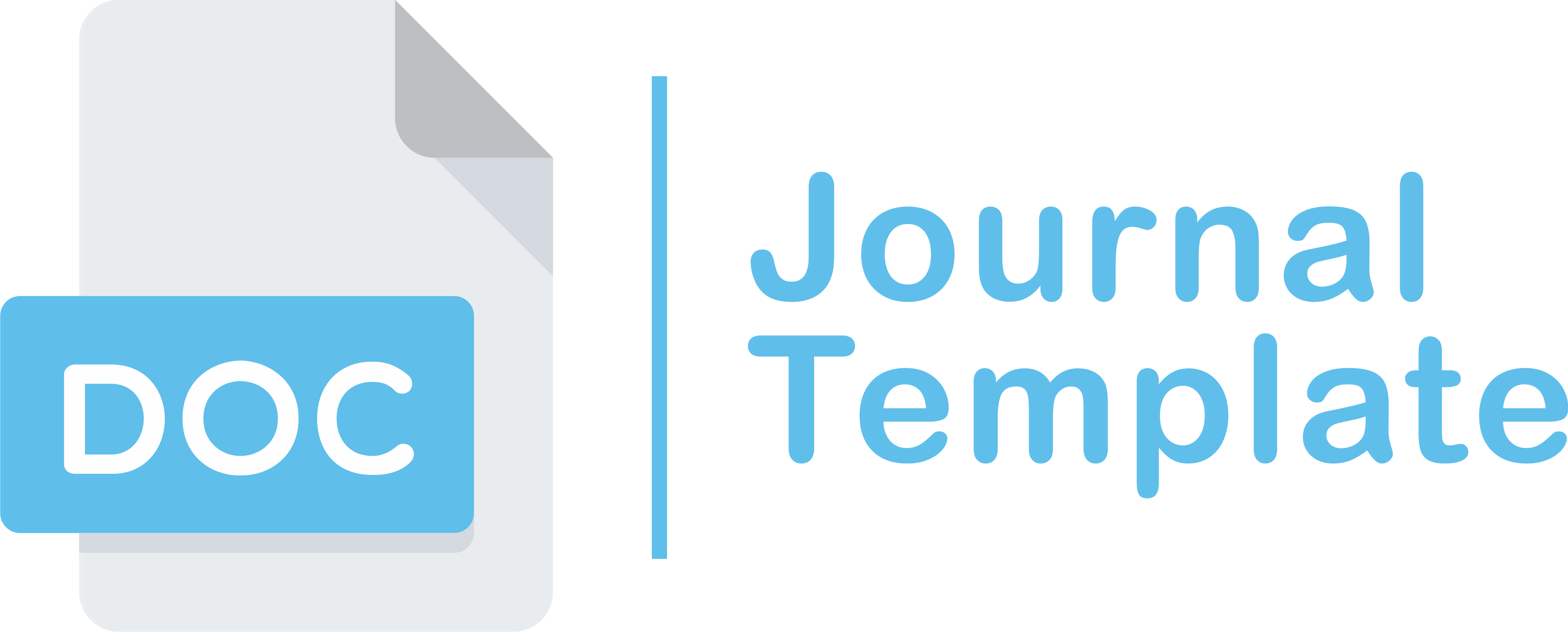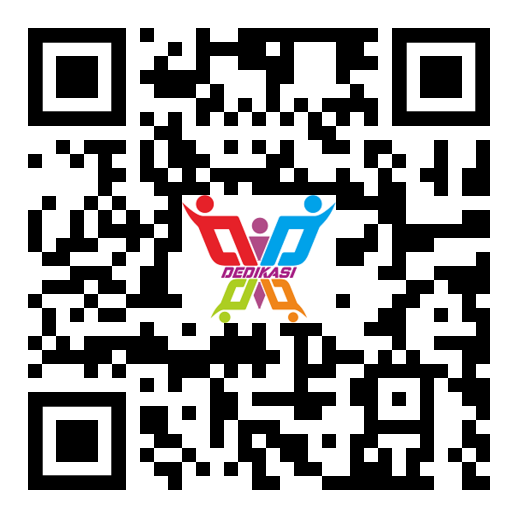Pendampingan Penerapan Model Pembelajaran RME Berbasis Etnomatematika Bagi Guru di SDN 06 Desa Tapak Gedung
Abstract
The Realistic Mathematics Education (RME) approach based on ethnomathematics has been introduced as a significant innovation in mathematics teaching in primary schools, linking mathematical concepts with local culture and students' daily lives. The objective of this service initiative is to enhance teachers' competencies in implementing RME, as well as to make mathematics learning more engaging and meaningful for students. The methods employed in this service initiative include training and mentoring for teachers, consisting of seminars, discussions, and direct teaching practices. The results of this initiative indicate a significant improvement in teachers' knowledge and skills in utilizing the RME learning model. Evaluation shows that the average student scores increased from 60.25 in the pretest to 91.25 in the posttest, indicating the success of this method's implementation. The conclusion drawn from this activity is that continuous mentoring for teachers in integrating ethnomathematics into RME learning is crucial for enhancing the quality of mathematics education, especially in the context of local culture. The application of this model not only improves students' understanding of the material but also fosters their interest in mathematics as a whole.
Keywords
Full Text:
PDFReferences
Agusdianita, N. (2021a). The exploration of the elementary geometry concepts based on Tabot culture in Bengkulu. Journal of Physics: Conference Series. IOP Publishing. https://doi.org/10.1088/1742-6596/1731/1/012054
Agusdianita, N. (2021b). The use of ethnomathematics learning devices based on realistic mathematics education models on mathematics literacy mastery. Prosiding International Conference on Educational Sciences and Teacher Profession (ICETeP 2020). Atlantis Press. https://doi.org/10.2991/assehr.k.210227.054
Agusdianita, N. (2021c). Pelatihan penerapan model realistic mathematics education berbasis etnomatematika Tabut terhadap kemampuan literasi matematika siswa kelas II SDN 67 Kota Bengkulu. Martabe Jurnal PPM, 4(1), 63–72. https://doi.org/10.31604/jpm.v4i1.63-72
Agusdianita, N. (2022). Model pembelajaran realistic mathematic education berbasis etnomatematika Bengkulu untuk mengembangkan kemampuan pemecahan masalah siswa SD. SHES Conference Series, 5(2). https://doi.org/10.20961/shes.v5i2.58329
Agusdianita, N. (2023). Pendampingan penerapan model realistic mathematics education untuk mengembangkan kemampuan pemecahan masalah siswa kelas II SDN 01 Kota Bengkulu. SHES Conference Series, 6(4). https://doi.org/10.20961/shes.v6i4.83121
Agusdianita, N., & Irfan, S. Y. (2023). Model pembelajaran problem based-learning (PBL) berbasis etnomatematika dalam meningkatkan hasil belajar mahasiswa. SHES Conference Series, 6(3). https://doi.org/10.20961/shes.v6i3.82317
Agusdianita, N. (2022). Application of online learning by using the Zoom Cloud Meeting application with an ethnomathematical-based inquiry approach in the subject of basic concepts of geometry and measurement. Proceedings of the Mathematics and Science Education International Seminar 2021 (MASEIS 2021). Atlantis Press. https://doi.org/10.2991/978-2-38476-012-1_29
Arifin, F. N., Agusdianita, N., & Karjiyati, V. (2022). Pengembangan bahan ajar matematika berbasis realistic mathematics education untuk menumbuhkan kemampuan literasi matematika pada siswa kelas IV SDN Bengkulu Utara. Juridikdas, 5(1). https://doi.org/10.33369/juridikdas.v5i2.15710
Inzoni, & Agusdianita, N. (2022). Konsepsi geometri pada etnomatematika Pane sebagai sumber belajar matematika di sekolah dasar. Juridikdas, 5(3). https://doi.org/10.33369/juridikdas.v5i3.21042
Kamaril, C., dkk. (2006). Pendidikan seni rupa/kerajinan tangan. Universitas Terbuka.
Karjiyati, V., Agusdianita, N., & Supriatna, I. (2022). Peningkatan kemampuan literasi matematika mahasiswa melalui penerapan model RME pada perkuliahan konsep dasar geometri dan pengukuran. Jurnal PGSD, 15(2). https://doi.org/10.33369/pgsd.15.1.49-56
Kurniawati, I. M. G., & Agusdianita, N. (2022). Eksplorasi etnomatematika di Bengkulu sebagai sumber belajar matematika pada materi penyajian data bentuk diagram batang. Jurnal Edubase, 4(1).
Kusumastuti, E. (2014). Penerapan model pembelajaran seni tari terpadu. Mimbar Sekolah Dasar, 1(1), 7–16. https://doi.org/10.17509/mimbar-sd.v1i1.858
Lidinillah, D., Rahman, R., Wahyudin, W., & Aryanto, S. (2022). Integrating Sundanese ethnomathematics into mathematics curriculum and teaching: A systematic review from 2013 to 2020. Infinity Journal, 11(1), 33. https://doi.org/10.22460/infinity.v11i1.p33-54
Mania, S., & Alam, S. (2021). Teachers’ perception toward the use of ethnomathematics approach in teaching math. International Journal of Education in Mathematics Science and Technology, 9(2), 282–298. https://doi.org/10.46328/ijemst.1551
Maulina, S., Junaidi, J., Taufiq, T., & Maulida, N. (2023). Teachers’ perception toward ethnomathematics-based learning. Jurnal Sains Riset, 13(3), 900–906. https://doi.org/10.47647/jsr.v13i3.2073
Mufti, F., & Aziz, T. (2024). Desain pembelajaran matematika topik transformasi geometri dengan pendekatan realistic mathematics education berbasis etnomatematika. Algoritma, 2(4), 115–129. https://doi.org/10.62383/algoritma.v2i4.102
Muharam, & Sundariyati, W. (1993). Pendidikan kesenian II (seni rupa). Departemen Pendidikan dan Kebudayaan Direktorat Jenderal Pendidikan Tinggi Proyek Pembinaan Tenaga Kependidikan.
Nguyen, T., Trinh, T., Ngo, H., Hoang, N., Tran, T., Pham, H., … & Bui, V. (2020). Realistic mathematics education in Vietnam: Recent policies and practices. International Journal of Education and Practice, 8(1), 57–71. https://doi.org/10.18488/journal.61.2020.81.57.71
Nurrahmah, A., Mulyatna, F., & Seruni, S. (2024). Workshop flipper book berbasis Google Sites melalui pendekatan etnomatematika bagi guru. Jurnal Solma, 13(1). https://doi.org/10.22236/solma.v13i1.12691
Palupi, E., Kohar, A., Ekawati, R., Fiangga, S., & Masriyah, M. (2022). Unpacking primary teachers’ initial knowledge of realistic mathematics education: A case of iceberg model of fraction division. https://doi.org/10.2991/assehr.k.211229.038
Payadnya, I., Wulandari, I., Puspadewi, K., & Saelee, S. (2024). The significance of ethnomathematics learning: A cross-cultural perspective between Indonesian and Thailand educators. Journal for Multicultural Education, 18(4), 508–522. https://doi.org/10.1108/jme-05-2024-0049
Prismayadi, A., & Mariana, N. (2022). Implementasi pembelajaran RME berbasis etnomatematika materi pecahan menggunakan konteks kue spiku. Jurnal Review Pendidikan Dasar: Jurnal Kajian Pendidikan dan Hasil Penelitian, 8(2), 133–146. https://doi.org/10.26740/jrpd.v8n2.p133-146
Purwanto, W., Zaenuri, Z., & Junaedi, I. (2024). Teachers’ perceptions of ethnomathematics learning in the independent curriculum program in Indonesia. International Journal of Education and Practice, 13(1), 98–113. https://doi.org/10.18488/61.v13i1.3963
Rasmitadila, R., Humaira, M., & Rachmadtullah, R. (2021). Teachers’ perceptions of the role of universities in mentoring programs for inclusive elementary schools: A case study in Indonesia. Journal of Education and E-Learning Research, 8(3), 333–339. https://doi.org/10.20448/journal.509.2021.83.333.339
Rusiyanti, R., Zulkardi, Z., & Putri, R. (2022). Developing RME-based lesson study for learning community in the learning environment of high school mathematics teachers. Journal on Mathematics Education, 13(3), 499–514. https://doi.org/10.22342/jme.v13i3.pp499-514
Sari, D., Hasratuddin, H., Fauzi, K., Syahputra, E., Simamora, E., & Sari, N. (2023). Ethnomathematics integrated realistic mathematics education to improve students’ interpersonal intelligence. Cypriot Journal of Educational Sciences, 18(2), 470–481. https://doi.org/10.18844/cjes.v18i2.8326
Sembiring, R., Hadi, S., & Dolk, M. (2008). Reforming mathematics learning in Indonesian classrooms through RME. ZDM, 40(6), 927–939. https://doi.org/10.1007/s11858-008-0125-9
Sunzuma, G., Zezekwa, N., Gwizangwe, I., & Zinyeka, G. (2021). A comparison of the effectiveness of ethnomathematics and traditional lecture approaches in teaching consumer arithmetic: Learners’ achievement and teachers’ views. Pedagogical Research, 6(4), em0103. https://doi.org/10.29333/pr/11215
Susanti, A., Dalifa, & Agusdianita, N. (2022). Pendampingan penerapan model realistic mathematics education berbasis etnomatematika untuk mengembangkan kemampuan pemecahan masalah siswa SDN 166 Kemumu Bengkulu Utara. Jurnal Martabe, 5. https://doi.org/10.20961/shes.v5i2.58329
Wulandari, D., Mariana, N., Wiryanto, W., & Amien, M. (2024). Integration of ethnomathematics teaching materials in mathematics learning in elementary school. IJORER: International Journal of Recent Educational Research, 5(1), 204–218. https://doi.org/10.46245/ijorer.v5i1.542
Yuliana, Y., Usodo, B., & Riyadi, R. (2022). The new way to improve mathematical literacy in elementary school: Ethnomathematics module with realistic mathematics education. Al-Ishlah Jurnal Pendidikan, 15(1), 33–44. https://doi.org/10.35445/alishlah.v15i1.2591
DOI: https://doi.org/10.20961/dedikasi.v7i2.98059
Refbacks
- There are currently no refbacks.
|







3.png)



1.png)




